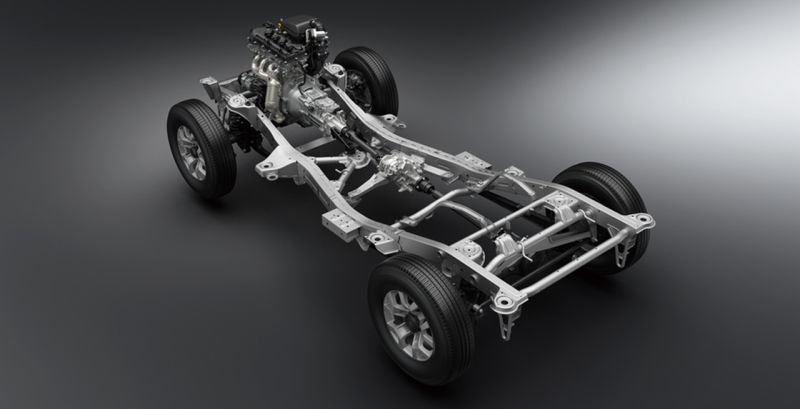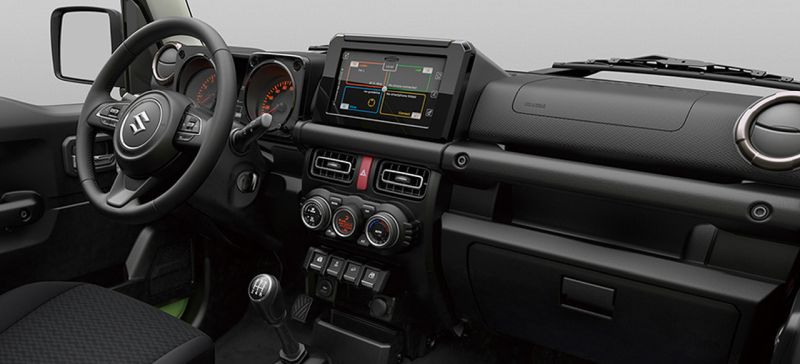The Maruti Suzuki Gypsy has been an icon for rally enthusiasts and adventure junkies for the past three decades here in India. However, with new safety laws on the forecast, it may seem that the Gypsy’s days are numbered.
The car that we know as the Gypsy, or a very similar looking variant, was called the Jimny in most other markets it was released in by Maruti’s parent brand Suzuki. The second generation Suzuki Jimny is the model that the Gypsy takes after. Suzuki now have released images of the fourth generation Jimny and it’s this model that we think might replace the aging Gypsy.
The new Jimny seems to take its styling from the box-style that’s prevalent in larger all-terrain SUVs. The chassis seems to be a ladder frame with three-link rigid axles and coil spring suspension, unlike the leaf springs on the Gypsy. On the engine front, the Jimny gets a 1.5 litre K15B four-cylinder petrol with 102 PS at 6,000 rpm and 130 Nm at 4,000 rpm. A five-speed manual or a four-speed automatic transmissions are on offer. Also, there is ALLGRIP Pro, a part-time four-wheel drive system with a low range transfer case, for when things get rough. Its off-road capability should not be underestimated for it has a generous ground clearance of 210 mm, which endows it with a 37° approach angle, 28° breakover angle and a 49° departure angle.
The interior has styling points from over the decades. This has resulted in the inclusion of big grab handle and chunky knobs and switches, there is also a modernized steering wheel with mounted-controls that augments the Jimny’s new age feel.
While the Jimny is poised for launch in international markets, we wonder if this new, fourth-generation Jimny will replace the Gypsy here on our shores too. If it does, it will be more applicable to everyday use than the gypsy, which lacked many interior and safety features. For those interested in getting their hands on this modern interpretation of the classic Gypsy, there is hope – rumours on the grey point are that this very Jimny has been spotted being tested in India. Watch this space for further developments.
[metaslider id=18660]
Story: Zal Cursetji























Leave a Reply